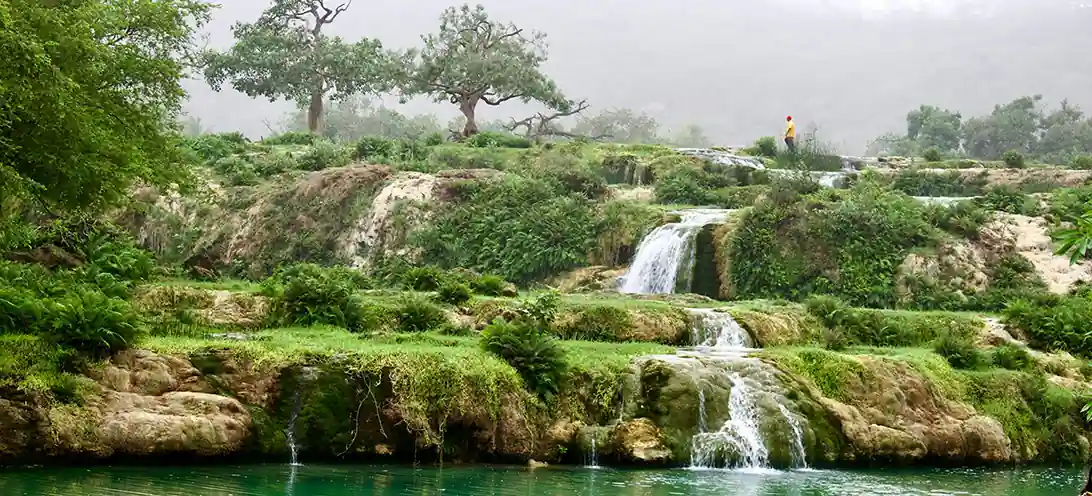Information about Sultan Armed Forces Museum Muscat
Sultan Armed Forces Museum Muscat stands where the historic Bait Al Falaj Fort once served as a royal residence. My first steps through its gates revealed how this building has become one of Oman’s most fascinating military museums.
The museum houses an impressive collection that spans centuries of Omani military history. We found that there was a remarkable range – from ancient weapons and traditional warfare artifacts to modern military equipment. Visitors can explore interactive exhibits that show the development of Oman’s defense forces.
Let me walk you through five must-see exhibits that showcase the museum’s most remarkable collections. These include rare weapons, vintage military vehicles, and innovative defense technology that make this institution truly special.
Step Inside the Historic Bait Al Falaj Fort
The imposing whitewashed walls and distinctive crenelated design of Bait Al Falaj Fort fascinate me. Sultan Said bin Sultan built this historic structure in 1845, which now houses the Sultan’s Armed Forces Museum and showcases Oman’s military heritage.
Architecture and historical significance
This fort’s location next to Alkbir Wadi made it a vital defensive position that commanded important mountain passes to Mutrah. The sort of thing I love about this fort are its military architectural elements:
- A square central building with a courtyard
- Two round towers at opposite corners (added after the original construction)
- Steep mountain slopes surrounding the structure
From royal residence to military headquarters
The fort’s story took an unexpected turn in 1907. The royal summer residence transformed into the Military Headquarters for the Sultan’s Armed Forces. A compelling chapter in its military history unfolded in 1915 when the fort successfully defended against rebel tribes. This heroic victory secured its place in Omani military history.
Modern museum transformation
Sultan Qaboos initiated the fort’s newest chapter in 1988 as the Sultan’s Armed Forces Museum. The transformation brilliantly preserved the building’s historic character and created engaging exhibition spaces. The fort’s grounds now serve as an open-air exhibition area that perfectly complements the indoor galleries. These galleries chronicle Oman’s fascinating military experience through centuries.
Discover Ancient Weapons Collection
The weapons gallery at the Sultan Armed Forces Museum takes me on a journey through centuries of Omani military heritage. Shining display cases showcase one of the most detailed collections of traditional warfare artifacts I’ve seen.
Traditional Omani warfare artifacts
Weapons in Omani culture went beyond their military purpose. Islamic tradition didn’t allow men to wear jewelry, but they could carry weapons. This led to some beautifully decorated pieces. Many traditional matchlocks feature silver and gold inlays, making them both practical tools and artistic masterpieces.
Development of military equipment
The museum’s collection tells the story of Oman’s military might. The variety of weapons on display catches my eye:
- Traditional Abu Fathilah matchlocks with decorated barrels
- Ornate powder boxes (talahiq) with geometric patterns
- Vintage Martini Henry rifles from the late 19th century
- Ceremonial daggers and swords with precious metal work
Rare and unique weapon displays
The rare pieces that showcase exceptional craftsmanship stand out the most. A unique set of nine silver-mounted ivory gunpowder chargers in their original leather container draws my attention. This combination is very rare to find intact. The geometric decorations with dots and circles reveal Oman’s artistic traditions, while the weapons highlight the nation’s military strength.
The Sultan’s Armed Forces Museum’s preservation of these artifacts is a great way to get knowledge about how Omani warriors equipped themselves from pre-Islamic times through the renaissance period.
Explore Military Vehicle Exhibition
The bright Muscat sun welcomes me as I walk into the Sultan Armed Forces Museum’s sprawling outdoor exhibition area. Military vehicles shine under the sunlight across the grounds, each one telling a story of Oman’s modern military rise.
Vintage military vehicles
The outdoor space holds an impressive collection of restored military equipment that shows strong British influence since the 1960s. Several pieces stand out:
- Vintage Land Rovers including the Late Sultan Qaboos’s historic vehicle
- Military tanks that command attention with their size
- Artillery pieces protected under special covers
- Command vehicles with their advanced communication systems
Aircraft and naval vessels
The air force exhibition shows the museum’s international scope. British designs dominate, but the aircraft collection includes military planes from around the world. A modern missile-equipped naval vessel shows Oman’s current maritime strength. A traditional wooden dhow sits nearby, connecting the past and present of naval warfare.
Interactive vehicle demonstrations
The exhibition becomes special because visitors can interact with it. Many vessels allow guests to climb aboard and explore their inner workings. The full-sized dioramas enhance the experience with detailed command posts and artillery batteries. These exhibits let visitors walk through and experience military operations firsthand. The Sultan’s Armed Forces Museum goes beyond displaying equipment – it brings military history to life.
Experience Modern Military Technology
The Sultan Armed Forces Museum’s modern wing naturally connects Oman’s military past with its technological present. The state-of-the-art equipment stands in stark contrast to traditional artifacts.
Contemporary defense systems
The impressive display of modern defense technology highlights Oman’s military progress since 1970. The exhibits show the Sultan’s Armed Forces transformation from traditional warfare to advanced defense systems. Digital displays demonstrate these modern systems protecting Oman’s interests on land, sea, and air effectively.
Military communication equipment
Modern military operations’ complexity comes alive in the communication section. The museum houses an extensive collection of advanced communication systems:
- Digital modular radios and software-defined communication devices
- Encrypted transmission systems for secure data exchange
- Satellite communication equipment for long-range coordination
- Cloud-enabled tactical systems for immediate operations
Training simulators and demonstrations
The interactive training simulators make this visit truly memorable. These state-of-the-art systems give visitors a unique look into modern military training. The advanced simulation experiences let guests step into an Omani soldier’s shoes. Live demonstrations show how these simulators help with tactical decisions and mission planning.
The modern exhibits balance educational value with Oman’s technological capabilities beautifully. Touch-screen displays and multimedia presentations helped me understand the advanced tools that safeguard this nation today.
Conclusion
The Sultan Armed Forces Museum, housed in the historic Bait Al Falaj Fort, has given me a deep appreciation for Oman’s military progress. This remarkable institution showcases centuries of military heritage through its exhibits.
The museum provides evidence of Oman’s dedication to preserving its past while embracing modern defense capabilities. Each section reveals a unique story. Traditional weapons with intricate decorations serve as art pieces, and an impressive collection of military vehicles highlights modern warfare developments. Modern technology displays and training simulators demonstrate Oman’s military advancement.
The exhibits create a bridge between Oman’s proud military history and its technological future. Carefully preserved artifacts and interactive displays make the Sultan Armed Forces Museum essential for anyone who wants to understand Oman’s military transformation over time.




















